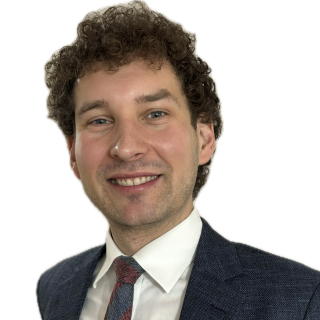Dutch pension funds’ feared storm is unfolding
An equity sell-off and lower rates are the perfect storm for Dutch pension funds. We estimate the turmoil has already shaved off 4% from the average funding ratio. With major reforms coming, funds will want to hedge the risk of funding ratios falling too low. As major players in swaps, 20yr fixed-rate receivers swaps can force the 20-30yr curve steeper
Equity sell-off and lower rates hits Dutch pension funds hard
With major reforms just around the corner, Dutch pension funds are anxiously watching equity prices collapse and global rates tumble lower. On 1 January 2026, more than €600bn of assets are planned to transition from a defined benefits system to a defined contribution system, which can significantly impact swap markets. Meanwhile, pension funds are carefully managing their risk to assure a smooth transition, but the current market turmoil puts portfolio managers in a difficult position.
Dutch pension funds measure their health through their funding ratio, which is calculated as total assets over liabilities. The sell-off in equities lowers the funds’ assets, whilst lower interest rates increase liabilities. The current environment is the perfect storm, reminiscent of early Covid-19 and the years after 2008 when many funding ratios dropped below 100%.
A continued sell-off would drive the average funding ratio towards 100%
Our modelling suggests that the impact so far on the average funding ratio is around -4%, which would bring the ratio down to 114%. The regression is run against changes in the world MSCI index and 20Y swap rates (whilst accounting for indexation effects), achieving an explainability of 96% of the variance in quarterly funding ratios. Under a stressed scenario (but not an unrealistic one) of a total 20% correction of the MSCI world index and 20Y swap rates declining to 2%, the average funding ratio would fall to 105%.
A continuation of the decline in equities and rates could bring funding ratios close to 100%

Several large funds, including the largest ABP (€500bn+ AUM), have a lower funding ratio than the average, and thus risk seeing their funding ratio fall too close to 100% for comfort. If the funding ratio for a pension fund falls below 100%, a smooth transition cannot be guaranteed.
Participants may have to accept cuts to their pension payments, or a fund may even decide to postpone the transition entirely. Cutting pensions is a taboo topic in the Netherlands and will be avoided at all costs, whilst a delay would bring its own operational challenges.
A continuation of the turmoil may wipe out the funding headroom of some funds

More demand for fixed receivers helps 20s30s steepener
The added headwinds and volatility therefore incentivises funds to hedge risk, either through fixed receiver swaps, equity puts or swaptions. As we have written before, the period leading to the transition dates could see increased demand for fixed receiver swaps, particularly in the 20y space. The 30y tenor is less attractive given that longer-dated hedges will become obsolete after transitioning to defined contributions. As such, the steepening of the 20s30s curve could run longer, helped by Dutch pension fund demand.
This publication has been prepared by ING solely for information purposes irrespective of a particular user's means, financial situation or investment objectives. The information does not constitute investment recommendation, and nor is it investment, legal or tax advice or an offer or solicitation to purchase or sell any financial instrument. Read more
Download
Download article